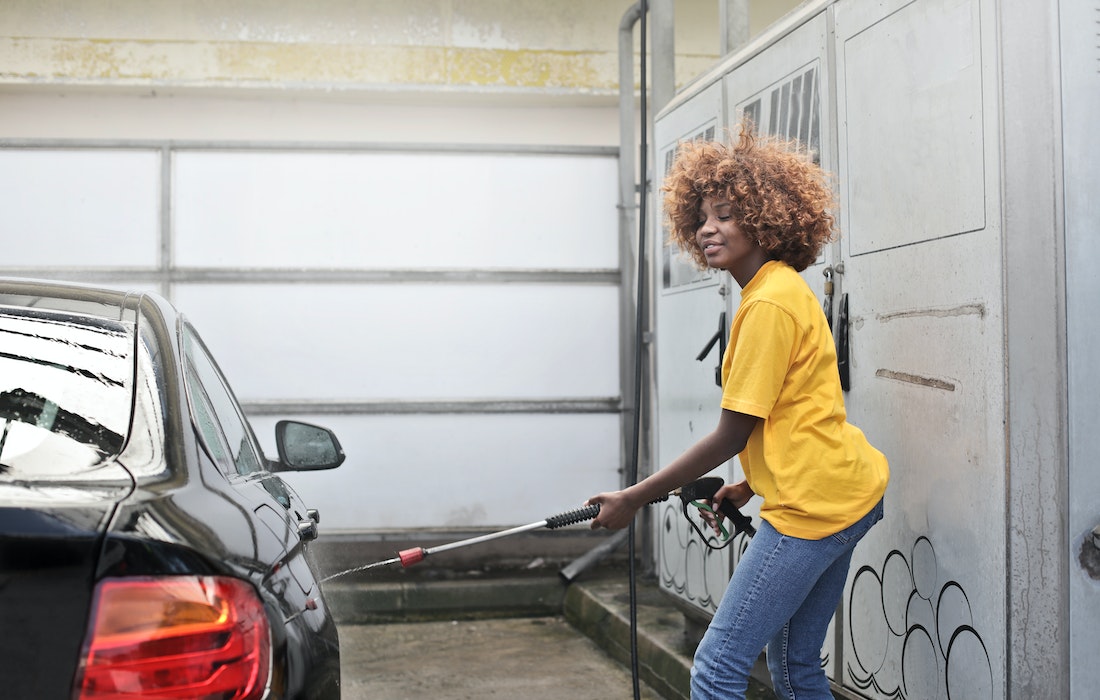Cars play a significant role in many people’s day-to-day lives – especially today, with the fast-paced schedules that many are trying to juggle. According to the United States Census Bureau, around 90 percent of households in America own at least one car.
However, while your car may be a trusty companion, it is also prone to dirt, dust, and grime. As such, it is crucial to ensure that your car is at its best with regular washes. Data reveals that about 8 million vehicles get washed daily in the US alone. But despite the uptick in car washing businesses, prices are still steep, and many owners opt for the more affordable option of a DIY self-car wash.
Aside from the cost savings of self-car washing, it also can be a fun, rewarding experience. It allows you to be more in control and get to know your car better. Knowing the proper methods, steps, and tools is essential to ensure you get the best results from your hard work. Read more to explore the best expert-approved tips for doing a DIY self-car wash.
1 Preparation
A self-service car wash is more than just getting a bucket full of soap and water. Preparatory steps are needed to ensure an effective car wash, which can help eliminate the unnecessary hassle and frustration of having to do it all over again. Here are some things you must focus on:
Remove Loose Debris
Before you start washing your car, it is essential to remove any loose dirt. Loose debris can cause scratches during the wash and damage your car paint. Especially if you have any mud or sap clinging to your car, it’s best to get rid of it first.
You can use a soft-bristled brush to remove any stuck and stubborn dirt. You can also use a quality scraper for any mud that might have adhered to your car. This way, you can work on the car without worrying about the dirt hindering your progress.
Choosing the right tools
Your car wash equipment also plays an essential role in making your self-wash car wash a success. Many people make the mistake of using subpar cleaning products and tools, which can result in a sloppy wash and cause damage to the paint job. But you can avoid this by investing in quality materials such as the following:
Car Soap

Choose a specialized car soap or shampoo that is appropriate for your vehicle’s exterior and won’t strip its protective wax coating. These are widely accessible in stores, and most have instructions on how to use them. Depending on your preferred scent, you can also opt for ones with fragrances.
Microfiber Cloth
Good-quality microfiber cloth is essential if you want to achieve a streak-free shine. Microfiber cloths are incredibly soft and absorbent materials that will help you get rid of dirt and grime without scratches or streaks on the car’s surface.
Buckets
A bucket is where you’ll put the mixture of car soap and water. You can use two buckets for the task – one for rinsing and another for washing. It is essential to avoid using a single bucket as it can contaminate the cleaning solution, resulting in dirt and grime being spread across your car.
Wash Mitt or Sponge
A wash mitt can help you safely scrub dirt and grime from your car. It’s beneficial for getting rid of stubborn dirt in hard-to-reach places. If you don’t have a car wash mitt, then your best bet is to use a soft sponge. But ensure that it has no abrasive materials that can scratch the car’s surface.
Pressure Washer

A pressure washer can make your washing job easier. It is a machine that sprays high-pressure water on the car’s surface, which can help remove dirt and grime much faster than a regular hose. However, utmost care is needed when using this equipment as some paint jobs can be quite delicate and easily get damaged.
2 Washing techniques
The proper washing process can make or break your car wash experience. By following the right steps, you can ensure a spotless ride and make your car look like new again:
Follow the right sequence
The sequence of washing is essential for achieving a perfect car wash. Start by removing your floor mats, then use a hose to rinse any surface dirt and debris. Once the dirt is gone, start washing the car with soap and water in a top-down motion. Then, rinse off the soap and dry your vehicle with a microfiber towel or chamois cloth.
Following the proper sequence ensures you’re making the most of your car washing experience and avoiding wasted time and effort.
Practice proper washing methods
When it comes to washing your car, you must practice proper techniques. The most common method is the two-bucket method. This involves using two separate buckets – one for the soapy solution and another for rinsing. This method ensures that you’re always using clean water for rinsing and avoid transferring dirt from one bucket to another.
Another method is the wash-and-rinse technique. This is ideal for small cars and can be done by hand. Start with a hose, then apply car soap and scrub gently with a microfiber cloth or sponge. When done, rinse the soap off and use a chamois cloth to dry your car.
Things to keep in mind
After you’re done with the basic washing process, it is necessary to take notice of the few key areas that will help ensure the longevity and good condition of your car:
Don’t forget the wheels
The wheels are often overlooked when washing a car. But they should be addressed as they can accumulate dirt and grime quite easily. Make sure to take the extra time to clean them with a wheel cleaner and brush.
You can also use a pressure washer for deeper cleaning. But be sure to avoid spraying the wheel bearing and other sensitive components as they may cause damage. You can also use a tire blackening solution to make your tires look shiny and new.
Be gentle with window cleaning
Even though you might be tempted to use a hard-bristled brush or scraper for window cleaning, this can cause scratches on your windows. Always use a soft cloth and a glass cleaner for better results.
The material of the window also plays a significant role in cleaning. If you have tinted windows, use a specialized cleaner to avoid discoloration or damage to the tint’s surface. On the other hand, a mixture of soapy water and vinegar can effectively clean regular windows. However, take extra care when cleaning the rubber seals of your windows and avoid using harsh chemicals. When these get damaged, they can cause water leaks in the future.
Take extra care on side mirrors
Your side mirrors are also vital, as a significant amount of dirt in this area can impair your vision when driving. However, you must be very careful in cleaning the mirrors and avoid using cleaners that contain ammonia or abrasive materials.
Many car-cleaning experts suggest investing in a specialized mirror cleaner and applying it with a soft cloth. This product is designed to clean and protect the surface of your mirror while avoiding any discoloration. Thus, helping you keep your view clear and avoid any accidents due to poor visibility.
Keep carpets and upholstery neat
When you’re done with the exterior, it’s time to move on to the interior. Vacuuming is essential for removing dust and dirt from carpets and upholstery. You can use a vacuum cleaner for this task or take out your car mats and shake them off to eliminate dirt and debris.
You can also brush your car seats to remove any dirt and stains. But make sure to use a soft brush or vacuum cleaner attachment. This can prevent any damage to the fabric of your car’s upholstery.
3 Drying your car
It is also important to note that your car needs to be dried quickly after washing. Otherwise, it can lead to water spots and streaks on the car’s surface. These are dried minerals that can be difficult to remove and may require a specialized cleaner.
When drying, use a chamois cloth and be careful not to rub too hard, as this may cause scratches and paint damage. If you spot any areas that need extra attention, switch your drying cloth to a soft microfiber cloth. Make sure to wipe the car in an up-and-down motion until it is completely dry.
You can also use a dryer to help dry any hard-to-reach areas. But ensure not to over-dry your car as this can leave other materials, such as rubber and plastic, brittle. With careful and proper drying, you can ensure that your car stays in its best condition.
4 Maintaining your car’s paint
Maintaining your car’s paint is just as important as washing it. While washing can help remove dirt and grime, there are other ways to help your car retain its luster and shine. If you plan on waxing your car, choose a quality wax designed for the kind of paint job your car has.
You can apply the wax in a circular motion and maintain a thin coat to ensure maximum protection. However, if you have waxed your car before, it’s best to use a polish or sealant first so that the wax can adhere properly. This is especially important for vehicles with metallic paint.
Many car owners opt for ceramic coating as it provides a protective layer that is much more durable than traditional wax. This coating can help protect your car from UV rays and other harsher elements. But follow the manufacturer’s instructions when applying this material and always use a quality product to ensure the best results.
5 Things to avoid
Self-washing your car can be quite a rewarding experience if done correctly. To avoid any issues with your washing process, here are some of the things you must avoid:
Avoid washing in direct sunlight
If you’re doing a do-it-yourself car wash outdoors, avoid exposing your car for too long in direct sunlight. This can damage the car’s paint and cause discoloration or oxidation. If possible, try to find spots in the shade to wash your car.
While washing, you can opt for a canopy to protect it from the sun and other elements. These are available in most car stores and can come in handy for outdoor washing.
Don’t use household cleaning products
Avoid using household cleaning products for your car wash as these can cause damage to its paint. Most of these products are designed for use in homes and don’t have the proper formulas to protect your car’s exterior.
Also, avoid using kitchen towels or sponges, as these can scratch the car’s surface. Instead, invest in microfiber cloths and quality sponges that won’t cause any damage.
Don’t forget to rinse off the soap

To avoid any soapy residue, it is essential to thoroughly rinse off all the soap after washing. Residue from the soap can attract dirt and dust, making your car look dull. That’s why it is best to use a hose or pressure washer to remove any soap and dirt left on the car’s surface.
You can also use a squeegee to help remove soap from windows and body panels. This way, you’ll be sure that no soap is left behind that can cause any damage or discoloration to the car.
Avoid cleaning too often
Your car does not need to be washed every day. In fact, frequent washing can strip the protective coating of your car and cause it to become dull and oxidized. To keep your car in the best condition, try to thoroughly wash it every two weeks or so. This allows the protective sealant to settle in and provide long-term protection.
Doing a self-car wash is not as difficult as it may seem, and with the proper preparation and techniques, you can have a spotless car in no time. The benefits of a DIY car wash go beyond having a clean ride – you can also save money, time, and effort. So follow these expert-approved tips and make the most of your self-service car wash experience. Hopefully, this comprehensive guide has helped give you an idea of how to do a self-car wash properly. Share your experience with us, and let us know what techniques worked for you!





